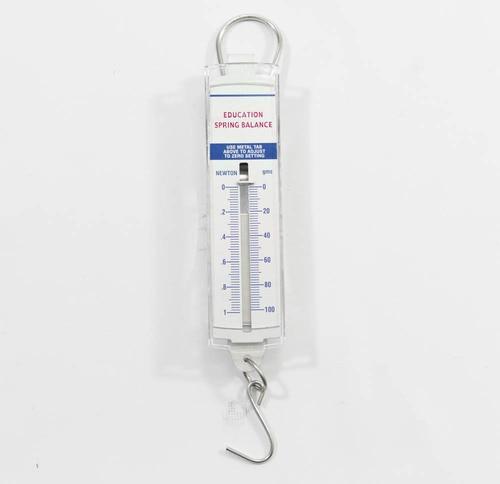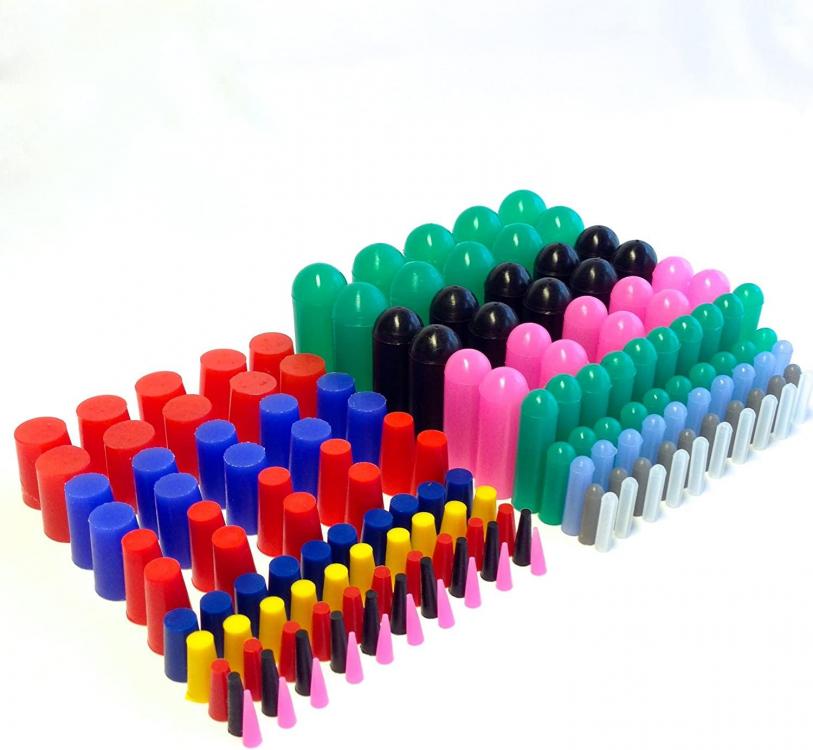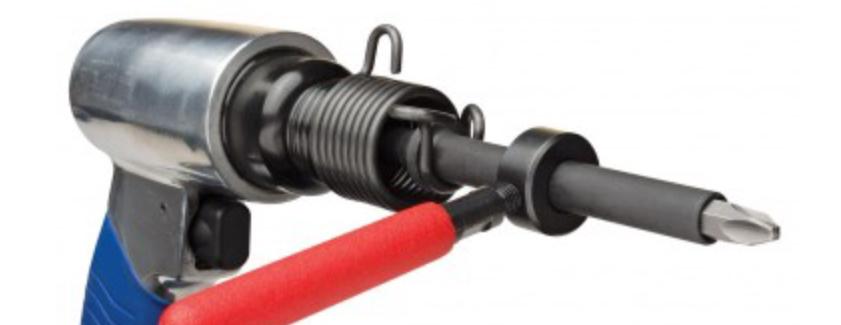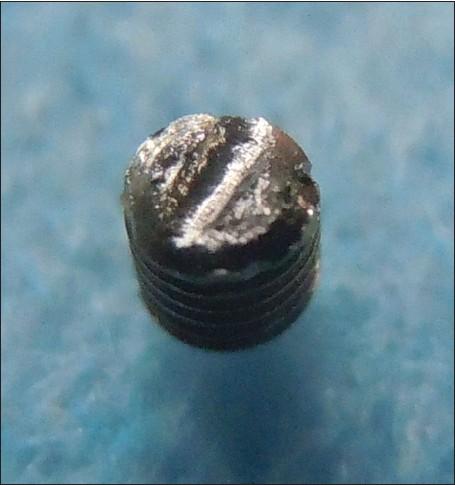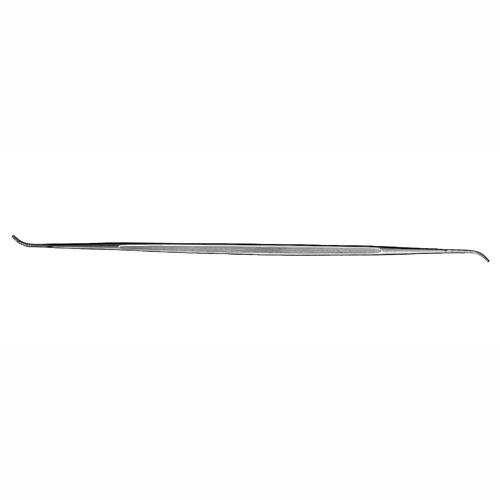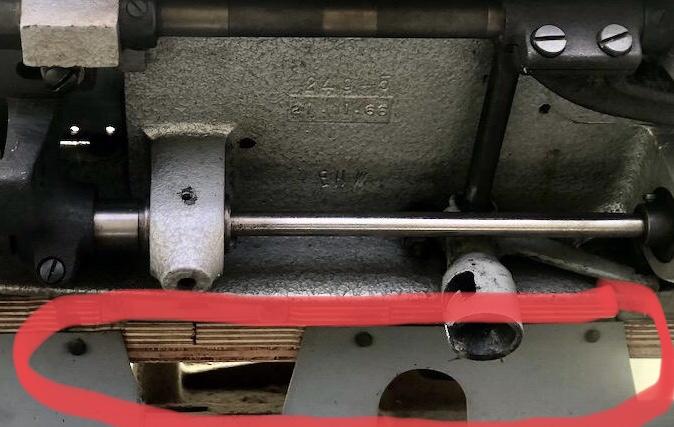-
Posts
794 -
Joined
-
Last visited
Content Type
Profiles
Forums
Events
Blogs
Gallery
Everything posted by DonInReno
-

Tension disks on Consew 99 not opening when foot lifted
DonInReno replied to Chelan's topic in Leather Sewing Machines
If you scan the local want ads once in a while someone with some upholstery weight hides will let them go for very cheap. Someone near me bought enough chocolate colored hides to redo his hotrod interior, but they turned out being the exact color of milk chocolate and he wanted dark! lol I bought a couple sides for $20. -
That's a cool machine! Definitely worth a little effort to get it going - oil everything that moves, put in a new needle and it might sew just fine as it is. The bad news is it's not a walking foot model - it looks like one of it's walking foot cousins, but it's a needle feed. The good news is that it's still quite capable and will sew light, medium and some heavy canvas quite well. Light and medium leather won't be a problem, but it won't feed like a triple feed 111w155. If you decide to get it going and sell it, you'll get nearly as much as a walking foot model. As it sits $200 would not be unheard of. Cleaned up and sewing well $300. edit: If you're more interested in a walking foot machine you might put out a local craiglist add looking to trade your machine straight across for a walking foot machine. More than one person has had a change in what they like to sew and wished they had a needle feed for lighter weight fabrics, or they have two 111w155s and would like to trade one to round out the collection. You never know.
-

Tension disks on Consew 99 not opening when foot lifted
DonInReno replied to Chelan's topic in Leather Sewing Machines
Lol If you get a chance to pick up a piece of thin to medium weight leather to have on hand you’ll soon find all sorts of uses from tool rolls to adding wear patches to storage bags to leather washers to reduce a rattle somewhere. Aviation is full of bits and pieces of leather. -
To me it looks like the singer version that the Consew 28 was based on. If so, it is not triple feed - they are needle feed with a walking foot and no feed dog. Edit: I think they are cool - but I’d only pay about $100 for one in good working condition - $50 for the apparent condition of this one. Parts will be hard to get.
-
Others will be along shortly to say this kind of household machine will only sew the very thinnest of leathers. However, if this would be your first sewing machine, in that role it’s very valuable to learn the basics - more than half of leather sewing are skills that are universal to all kinds of sewing. It’s also valuable to get your feet wet in sewing before investing in an expensive leather sewing machine. Many times the idea of sewing is mentally more fun that reality.
-
I recently purchased the most idiotic gadget that I swore would never be worthwhile - a spring scale that reads up to 100 grams. I don’t need one, and if a bobbin drop test can’t be done on a vertical hook machine it’s easy enough to guess and adjust accordingly if the material needs it. About 30 grams of weight is roughly what a bobbin drop test shows in the machine I normally sew 138 with. No surprise there - having a spring scale tell me that isn’t helpful...right? Well....I had three vertical hooks and went to set the same tensions on them and discovered a lot of variation depending on slight differences in direction of pull. The worst offenders had the roughest finish on the edges of the tension spring. Tensions can easily double with minor changes in thread angle. I hadn’t expected that. Polishing the edges with 1000 grit sandpaper smooths things out considerably. Honestly it doesn’t sound fun to polish every tension spring that lands on my healing bench so I’m not going to check unless there is some kind of problem. Sometimes ignorance is bliss. ....and I’ve changed opinion of the thing - it’s rarely used, but well worth the $10. I wouldn’t recommend the scale to anyone else, but I would recommend polishing the edges of the bobbin tension spring if you have any doubts about it. Use a good screwdriver and don’t loose the screws! If I were in your situation I’d first try a different high quality thread and make doubly sure there are no burrs or sharp edges anywhere in the upper and lower thread paths - including polishing the bobbin spring.
-
I bet you’ll like the Superior sewing catalog https://supsew.cld.bz/Superior-Sewing-Digital-Master-Catalog
-
If the Juki lived an easy life in an alterations shop, or residential user, and worked perfectly then it’s a great deal. I have a 30 year old Juki that had an easy life with a tailor and shows very minor wear. Unfortunately, you have to assume it hasn’t had an easy life unless there is evidence to the contrary. Look it over very carefully for cracks or other indications it’s been dropped. Many machines with small cracks will sew just fine, but cracks only get worse. Either look carefully at the condition of the hook or assume you’ll have to replace it and retime everything. Damaged hooks are one of the popular reasons people get rid of a machine. If it was in a factory setting, half price is too much. A factory maintenance shop will sometimes get some new machines, sell an equal number of well used machines in need of rebuilds, add the worst presser feet, hooks and tensioners that will barely work, and ship them out the door.
-
That’s great news! It must be a relief to be able to concentrate on sewing and not fighting with the machine. :-)
-

Seiko STH-8BLD-3 - Help diagnosing noise at low speed
DonInReno replied to pgc's topic in Leather Sewing Machines
That’s great news the sound has subsided. You can still buy sewing machine belts at the auto parts store of your choice. They are labeled 3L followed by the length in inches. For instance a 30” long belt is a 3L30 or 3L300. A 30.5” belt is a 3L305. Not every auto parts person knows about the 3L belts since they are not associated with a car, but most chains stock them. Ebay or Amazon are probably the easiest and least expensive option. For some strange reason a google search for a specific 3L belt turns up a bunch of crappy suggestions, few of which are anything close to a basic 3L belt. A search on Amazon, eBay, Napa, grainger, etc. will give better results.- 8 replies
-
- noise
- consew 206
-
(and 1 more)
Tagged with:
-

Singer 111w155 feed lift eccentric - balance wheel?'s
DonInReno replied to Wyowally's topic in Leather Sewing Machines
Looks good! -

Singer 111w155 feed lift eccentric - balance wheel?'s
DonInReno replied to Wyowally's topic in Leather Sewing Machines
I’d love to have one of those embossing heat guns! Maybe Santa will put one under the tree! There is something extra nice about a super high gloss black machine with bright fresh decals, but that can be a lot of work to detail. I made the mistake of stripping the paint and filler off a 111w and it will take 20 hours of filling and hand sanding to get it as straight and smooth as it was - it may go back to a hammered finish. I’ve always been impressed with those who have been able to make money stripping and refinishing sewing machines. I’d make more money per hour working for minimum wage. Lol Uwe turned me on to these silicon plugs used in powder coating to keep holes clean. They work great to keep paint out of the various holes and whatnot. -
Good job!
-

Singer 111w155 feed lift eccentric - balance wheel?'s
DonInReno replied to Wyowally's topic in Leather Sewing Machines
It’s quite impressive how tight some screws are. The small slot on those set screws makes a properly fitting screwdriver important. I keep two Klein electrician screwdrivers handy for those set screws - the tips are quite hard and fit the slot well. One is just a normal screwdriver. The second is essentially just the metal shank of the same screwdriver and it gets struck with a hammer, metal-on-metal, to help jar the set screw. On very tight screws I normally smack the set screw sharply a few times, which is probably only increasing the indent in the shaft a few ten-thousands, but it does release some tension. Then the area is heated up to at least 175 degrees, which frees up any resistance caused by dried oil or other substances acting as a thread locker. The handwheel bore will also increase in size slightly - the bore of a steel hub expands about .0007” per inch per 100 degrees. Since it’s only a 1/2” bore, it only grows a few ten-thousands, but it still helps. Hopefully nobody has tried to turn those screws with a poorly fitting screwdriver and buggered up the slot. In those cases you might try one of those impact-actuated screwdrivers....finding a hex drive screwdriver bit of the correct size would take a bit of looking around. -
My take on this is the thread should be changed to a bonded poly or bonded nylon. Either is much stiffer than a cotton wrapped poly and makes a better loop at the needle so the hook can pick it up easier. Once timing and needle clearance are set it shouldn’t quickly lose adjustment - screws aren’t tight enough, or improper rotation of hook drive gear so the set screw is partially out of the slot in the shaft, or ? You may have set the timing and needle gap correctly, but many people misunderstand or misjudge these clearances. I’d suggest reviewing one of the good videos on a singer 111w, juki lu-562 or 563, Consew 225, or other similar machine with vertical hook until you are very confident in the adjustment. Needle deflection while sewing can also cause intermittent skipped stitches - if the needle is being bent away from the hook by the fabric nothing can be done to prevent skips. I once inspected the hook timing on a machine that was sewing just fine - the owner had the needle reversed - may have had the needle reversed for the ten years she owned it. Make sure the needle is installed correctly. If the tip of the hook is bent or blunt from impacting a needle then you need a new hook. No amount of messing with the timing or gap can make a blunt hook work correctly. As far as I know, nobody has a video on damaged hooks (what to look for, how to correct minor damage, etc.), so the best you can do is try and compare what’s on your machine with a good hook.
-

Durkopp Adler 239-125 Missing Oil Pan / Timing?
DonInReno replied to machineage's topic in Leather Sewing Machines
That is a bummer! A left hand drill bit would be ideal if you could get the right angle. Im just thinking out loud, but it might be worth trying to degrease the screw and put a tiny drop of jb weld on the end of a cut off round toothpick....if the screw is really loose in the hole it might have enough torque to gently back it out? Ive never had the patience to scratch a slot in a broken off screw, but I have seen a watch maker carefully grind a very small sharp chisel point on the end of a die file and over the course of an hour scratched enough of a slot that a very small eye glass screwdriver backed the screw out. I would need a magnifying glass to see what was happening. -
I’ve always been impressed at how these needle feed machine sell for only slightly less than a walking foot model. $500 for just the head wouldn’t be unreasonable once you get it sorted out and sewing well. At least with upholstery folks, it’s not uncommon to go up a needle size with needle feed machines just to have a stiffer needle that deflects less. Looks like fun!
-
Very nice.
-

Durkopp Adler 239-125 Missing Oil Pan / Timing?
DonInReno replied to machineage's topic in Leather Sewing Machines
I don’t see the advantage of one kind of tray over the other if all they are doing is catching oil drips. If the idea is the felt in the small pan keeps the lower hook bearing lubricated, that’s not needed if it’s oiled every day, but more importantly it wouldn’t oil the upper hook bushing that is more prone to wear. -
That’s a good price even though it’s just a needle feed Every day it’s used, one drop of oil anyplace two pieces of metal rub together is all you need. That includes all the oil holes, but also places under the covers that cant be reached by one of the oil holes. Only regular sewing machine oil is needed. If a machine is new to me I’ll over oil it the first time.
-
Organ’s catalog also has some interesting trivia if you haven’t thumbed through the pdf yet. https://organ-needles.com/english/wp-content/uploads/2020/07/2104_organ_catalog_HP.pdf
-
The thread exchange has a list of machines and their needles - it looks like they have some information on your machine - although somewhat cryptic. :-)
-

Stitch length regulator singer 241-12
DonInReno replied to Threadbeat's topic in Leather Sewing Machines
An industrial sewing shop is very good at tracking down parts of all kinds. Give these guys a call. https://www.tolindsewmach.com/- 14 replies
-
- 241-12
- stitch length
-
(and 1 more)
Tagged with:
-
You probably want to ask this in the sewing machine section.
-

Durkopp Adler 239-125 Missing Oil Pan / Timing?
DonInReno replied to machineage's topic in Leather Sewing Machines
Isn’t that the side of an oil pan? On these older machines oil drip pans are all sorts of styles. Many of us remove the metal pan and simple attach a piece of leather under the machine - when it’s oil soaked just change it out. I’d check out Uwe’s YouTube videos on hook timing on his Consew 225 - you will see the mechanism is very similar to yours and the clearances are essentially the same with 95% of all upholstery style flat bed machines. In a nutshell, when the the needle hits the bottom of its travel and rises the thickness of a nickel, that’s when the point of the hook should be inline with the needle, 1/16” above the eye of the needle, and the gap should be as close to the needle as possible without deflecting it. These four things have to happen. A fifth part of hook timing would be the condition of the hook point - it has to be the correct shape and fairly sharp. A bent hook will be hard to adjust and might cause needle guard issues. A blunt hook will be more likely to grab or shred thread, or skip stitches.



